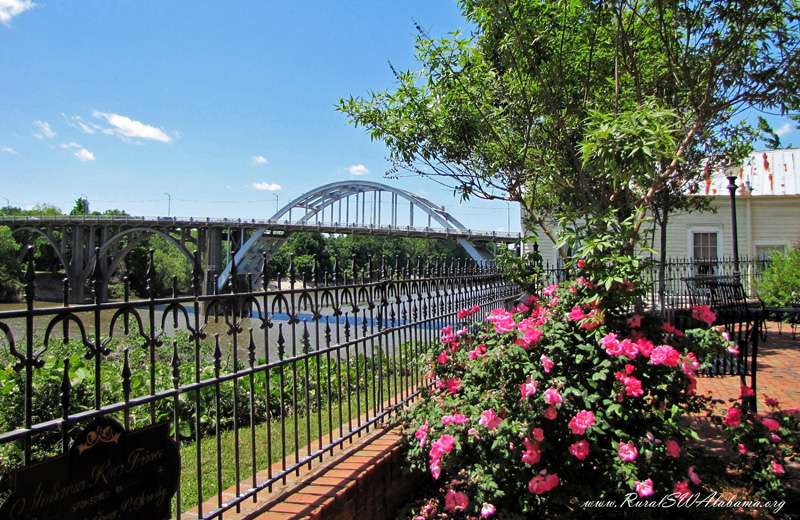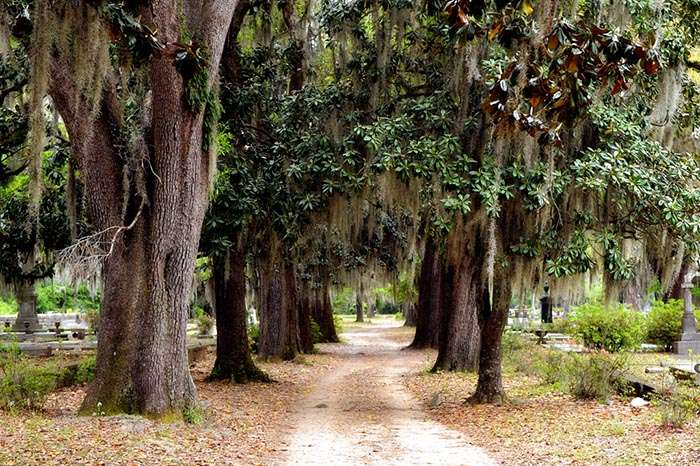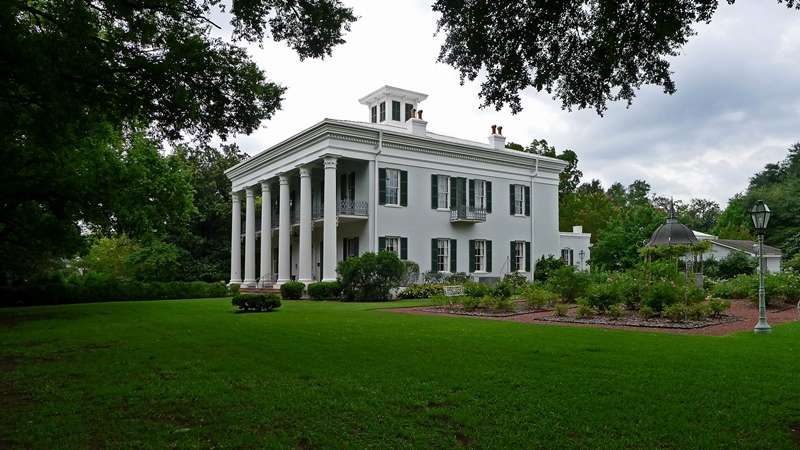
The Edmund Pettus Bridge spans over the Alabama River at downtown Selma, AL. It is a steel through-arch bridge that was designed by Henson K. Stephenson and erected in 1939. The bridge was named for Edmund Winston Pettus, a former Confederate Brigadier General and U. S. Senator from Alabama. The Edmund Pettus Bridge was the site of the historic civil rights conflicts known as the Selma to Montgomery Marches and “Bloody Sunday.” The demonstrations that occurred here led to the U.S. Voting Rights Act of 1965. The Edmund Pettus Bridge is a symbol of the civil rights movement. USA Weekend includes the bridge, along with Ellis Island, Jamestown and the Lincoln Memorial, among the “ten historic land- marks that bear proud witness to our nation’s enduring freedoms.
The Edmund Pettus Bridge was added to the National Register of Historic Places on February 27, 2013 and it was declared a National Historic Landmark on March 11, 2013. It is a contributing property to Selma’s Water Avenue Historic District that’s listed on the National Register of Historic Places. The Edmund Pettus Bridge is also part of The Selma to Montgomery National Historic Trail that’s administered by the National Park Service (NPS).

Visitors who stroll through the beautiful cemetery will find glory, humor and sadness in the lives of those whose stories are told here. The oldest portion of the cemetery was purchased by the Township of Selma in 1829 and named West Selma Graveyard. The newer section of the cemetery grounds was purchased in 1877 and combined with the older section to form ‘Live Oak Cemetery’. The cemetery received it’s name in 1879 when Col. N.H.R. Dawson arranged for ’80 Live Oaks and 80 Magnolias be purchased from Mobile to be planted throughout both portions of the cemetery.’ Many prominent Selmians are buried at this cemetery including U. S. Vice President William Rufus King, who was one of the founders of Selma.
Live Oak Cemetery is a contributing property to Selma’s Old Town Historic that’s on the National Register of Historic Places. It is also listed on the Alabama Register of Landmarks and Heritage.
This cemetery is located on Dallas Avenue approximately 0.7 miles west of downtown Selma (32.405428,-87.031389). Touring maps of the cemetery are available at the Selma Welcome Center located at downtown Selma on Broad Street.
Also a wonderful place for a quiet walk to watch birds, Live Oak Cemetery in Selma is a stunning image of the old south with row upon row of massive live oaks draped in Spanish moss. The oaks hold good numbers of breeding birds – from Red-shouldered and Cooper’s hawks to warblers, vireos, Summer Tanagers, and various flycatchers. Winter brings many sparrows to the open understory, and mixed-species feeding flocks of songbirds. A visit here shouldn’t require more than a couple of hours.

Brown Chapel AME Church, with its imposing twin towers and Romanesque Revival styling, was built in 1908 by black builder – of whom little is known – A.J. Farley. This church and its congregation played a major role in the events that led to the adoption of the Voting Rights Act of 1965. Brown Chapel was the starting point of the three Selma-to-Montgomery marches in 1965 and it served as the meeting place of the Southern Christian Leadership Conference during the Selma Voting Rights Movement. The nation’s reaction to Selma’s “Bloody Sunday” march is widely credited for the passage of the 1965 Voting Rights Act in the United States Congress. Brown Chapel was added to the Alabama Register of Landmarks and Heritage on June 16, 1976 and declared a National Historic Landmark on February 4, 1982. In front of Brown’s Chapel is a monument that was dedicated to Dr. Martin Luther King Jr. in 1979.
This historic church is located at 410 Martin Luther King Street which is near downtown Selma, AL (GPS coordinates 32.412361,-87.016250).
This mansion is one of the finest examples of Greek Revival neo-classic architecture in the Southeast. Built in 1852-1856 as a townhouse for Col. Edward Watts, the 10-room, 6,000-square-foot mansion cost $69,900 to construct. Artisans from Italy were brought in to do the plaster and marble work throughout the home. The marble was imported from Italy.
The City of Selma purchased Sturdivant Hall in 1957 and it now serves as a historic house museum. The house contains period antique furnishings, porcelain and doll collections, as well as an impressive collection of art. A tour of this site includes the house, detached kitchen, gift shop and formal garden.
Sturdivant Hall also has a ghost story associated with it. The house is featured in a short story by Kathryn Tucker Windham, in her “13 Alabama Ghosts and Jeffery”. The story, “The Return of the Ruined Banker”, involves John Parkman, one of the owners of Sturdivant Hall, and the purported return of his ghost to the house after his death.




